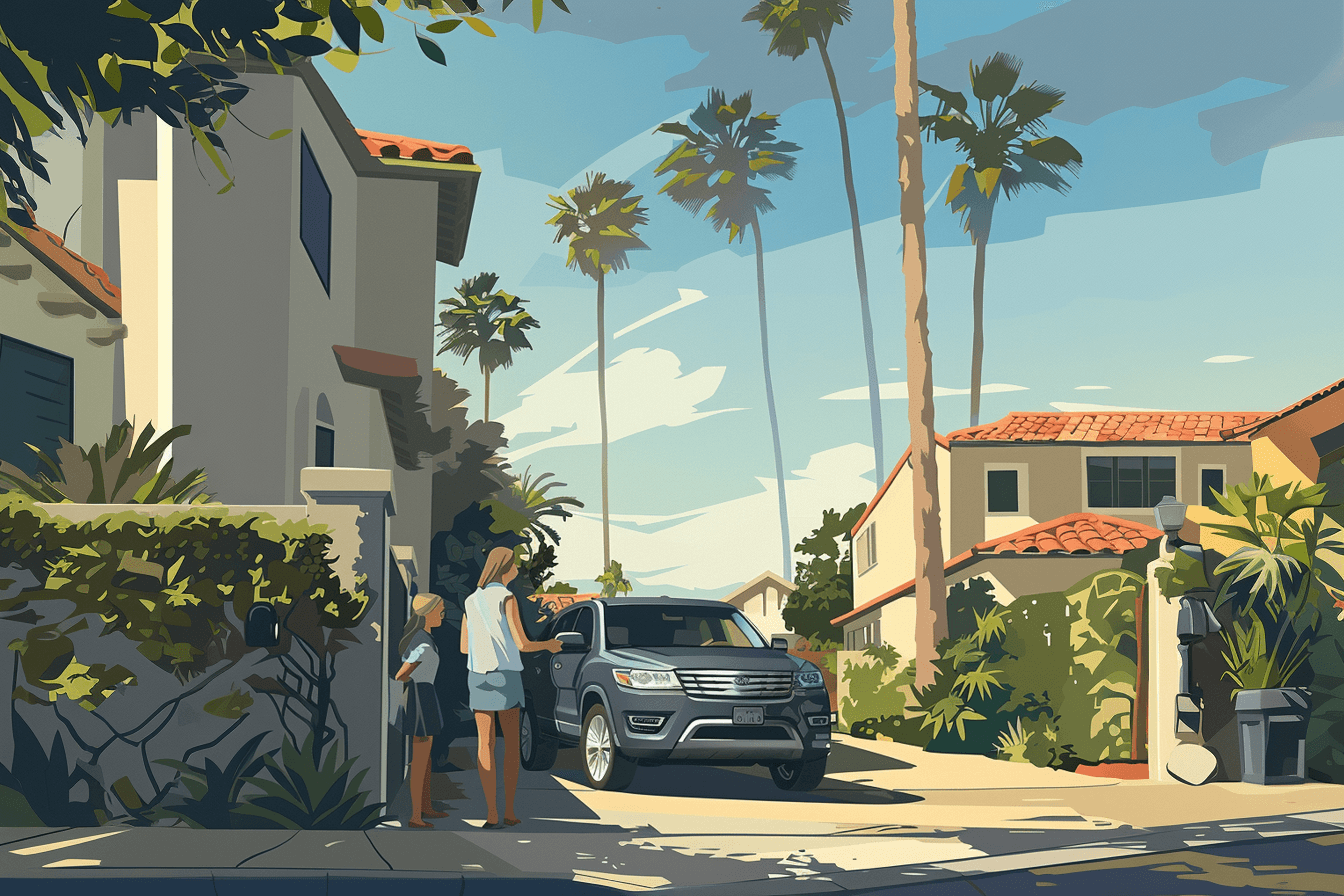How a Wheel Alignment Pays for Itself
Written By
Peter O'Neil
Published
Aug 11, 2024
The Car Care Nut. “Does Your Car REALLY Need a Wheel Alignment? Everything You Need to Know About Car Alignments,” February 10, 2024. https://www.youtube.com/watch?v=jtptaIYgIHQ.
Discover the causes of wheel misalignment, learn to spot issues, and understand the cost benefits of regular alignments. Maximize your vehicle's performance.
Understanding Wheel Alignment and Its ImportanceIntroduction
The video embedded above offers a lot of great detail, but if you didn't want to spend 18 minutes on the subject, please refer to this article that covers the basics.
A wheel alignment is an important part of vehicle maintenance that involves adjusting the suspension system to ensure your tires meet the road at the correct angles. This process improves handling, fuel efficiency, and extends tire life.
Proper wheel alignment pays for itself in the long run. By investing in regular alignments, you save on premature tire replacements and enjoy an enhanced driving experience.
In this article, you will learn:
The process and benefits of wheel alignment
Common signs of misalignment
Financial implications and cost-saving benefits of wheel alignment
Recommended frequency for alignment checks
The importance of seeking specialized mechanics
Quality parts' role in maintaining alignment
Understanding these aspects will help you make informed decisions about your vehicle's maintenance, ensuring it performs optimally while saving money over time.
Wheel alignment is a precise process that involves adjusting the angles of your tires to meet the manufacturer's specifications. This procedure ensures that your wheels are parallel to each other and perpendicular to the road surface. The connection between the suspension system and tire angles is critical in this process. The suspension system, which includes components like control arms and struts, must be properly aligned to maintain the correct tire angles.
Key Aspects of Wheel Alignment:
Camber: The angle of the tire when viewed from the front. Negative camber means the top of the tire tilts inward, while positive camber means it tilts outward.
Toe: Refers to whether the fronts of the tires are closer or farther apart than the rears. Toe-in means the fronts are closer, whereas toe-out means they are farther apart.
Caster: The angle of your steering axis when viewed from the side, affecting steering stability and cornering.
Proper alignment directly impacts handling improvement by ensuring optimal contact with the road. Misaligned wheels can cause uneven tire wear, leading to poor handling characteristics and increased fuel consumption due to added rolling resistance.
Benefits of proper wheel alignment include:
Enhanced Handling: Accurate alignment improves vehicle responsiveness and stability, making driving smoother and safer.
Fuel Efficiency: Properly aligned wheels reduce rolling resistance, thus improving fuel economy.
Overall Driving Experience: Ensuring that your vehicle's wheels are correctly aligned contributes to a more comfortable ride and extends the lifespan of your tires.
Signs of Wheel Alignment Issues
Recognizing the signs of wheel alignment issues early can prevent costly repairs and ensure a safer driving experience. Several symptoms indicate misalignment:
Uneven Tire Wear: A common indicator. If you notice one side of your tires wearing down faster than the other, it's likely due to improper alignment.
Vehicle Pulling: When your vehicle drifts to one side while driving straight, this often points to alignment problems.
Steering Wheel Vibration: Feeling vibrations in the steering wheel could signify misaligned wheels affecting the balance and smoothness of your ride.
Crooked Steering Wheel: A steering wheel that appears off-center when driving straight suggests a need for alignment adjustment.
Early detection doesn't just enhance safety; it also offers potential cost savings. Addressing these issues promptly prevents further damage to your tires and suspension system, avoiding more expensive repairs down the line.
Misalignment impacts not only tire longevity but also fuel efficiency and overall vehicle performance. Regular checks help maintain optimal conditions, ensuring that your car runs smoothly and economically.
Maintaining proper wheel alignment is about more than just comfort; it's a proactive measure that safeguards both your wallet and well-being on the road.
Financial Implications of Wheel Alignment
The typical cost of a wheel alignment service in the Southern California ranges between $150 - $200. This expense is relatively modest when you consider the potential costs associated with premature tire replacement. Misalignment leads to uneven tire wear, and tires that wear out prematurely can cost hundreds of dollars to replace.
Example:
A set of four new tires can easily cost between $400 and $800 depending on your vehicle's make and model.
Regular wheel alignments prevent these premature tire replacements, ensuring even tire wear and extending the lifespan of your tires. This not only saves money but also keeps your vehicle performing optimally.
Cost Comparison:
Wheel Alignment Cost: $150 - $200
Four Tire Replacement Cost: $400-$1,000+
To get a sense of the replacement costs for your current tires, consider reviewing this article or check out TireRack.com. You might be surprised at the expense of a new set of tires, particularly if your tires are 20" or more. And if the tires are Run-Flat, that adds another level of cost.
Investing in regular alignments pays for itself by:
Reducing tire replacement frequency
Enhancing fuel efficiency
Improving overall vehicle performance
Isolates and identifies other suspension issues that maybe causing tire wear.
Avoiding misalignment issues means fewer trips to the mechanic and more savings in your pocket. Proper alignment practices ensure that you maximize every dollar spent on maintaining your vehicle, enhancing both safety and financial efficiency.
Signs Your Wheel Alignment May Be Off
Several signs may indicate your vehicle is due for a wheel alignment. These include:
Uneven tire wear: If you notice that your tires are wearing down more on one side than the other or if the front and rear tires are wearing down at different rates, your alignment may be off.
Vehicle pulling to one side: If your vehicle drifts to one side while you're driving straight, it could be a sign of an alignment issue.
Steering wheel vibration: A vibrating steering wheel can be a sign of misalignment.
Crooked Steering Wheel: If your steering wheel is crooked while driving straight, it's time to check your alignment.
Keeping an eye out for these signs and addressing alignment issues promptly can save you from premature tire replacement costs.
Additional Cost-Saving Strategies Related to Vehicle Maintenance
Proper tire inflation saves money and enhances vehicle performance. Maintaining the correct tire pressure is essential for achieving even tire wear, boosting fuel efficiency, and ensuring a smoother ride. Regularly checking your tire pressure can prevent underinflation or overinflation, both of which can lead to premature tire damage and increased fuel consumption.
Here are a few maintenance practices to complement regular wheel alignments:
Tire Rotation: Rotating your tires every 5,000 to 7,500 miles promotes even wear, extending the life of your tires. Although if your car has different sized wheels between front a rear, like some performance vehicles, rotating them isn't a viable option.
Balancing Tires: Properly balanced tires prevent uneven wear and reduce strain on the suspension system. Specifically because when a wheel is out balance it is putting more strain on the suspension and related parts to control it.
Routine Inspections: Regularly inspect your tires for signs of damage or unusual wear patterns. Early detection of odd wear patterns may be beneficial in addressing the issue and maximizing the remaining life of the tires.
Oil Changes: Keeping up with regular oil changes ensures smooth engine operation and can improve fuel efficiency.
Brake Maintenance: Regularly servicing your brakes not only enhances safety but also prevents more expensive repairs in the future.
Investing in these routine maintenance practices maximizes cost efficiency throughout your vehicle's lifespan. Each step plays a crucial role in sustaining optimal vehicle performance and longevity.
Conclusion
Prioritize regular vehicle maintenance to maximize the financial benefits of wheel alignments. Proper alignment not only improves handling and fuel efficiency but also extends tire life, providing significant cost savings, particularly if your vehicle's tires are larger and more expensive.
When you notice tire wear which is inconsistent with a normal, even, wear pattern, take the opportunity to determine if there any other symptoms of an alignment issue, such as the vehicle pulling or vibration is felt through the steering wheel.
If you do end up needing to replace your tires in conjunction with a new alignment, you might find this article helpful as it reviews the Uniform Tire Quality Grading System. Understanding of these codes can be helpful in selecting tires with a treadwear grade that is higher.
Investing time in these practices ensures your vehicle remains reliable, safe, and cost-efficient over its lifespan.















